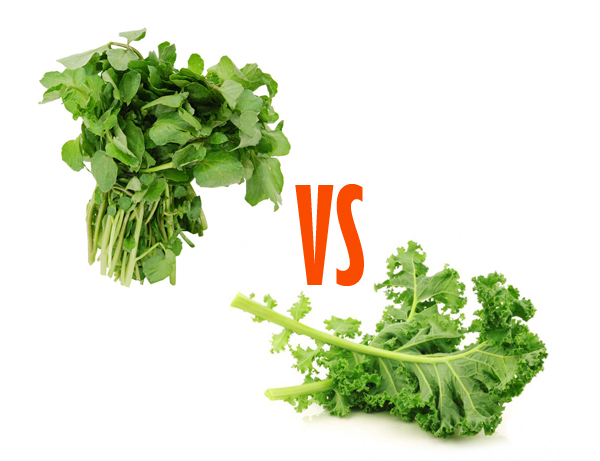Just when we were all getting comfortable with kale… along comes watercress to mix everything up.
Watercress vs. Kale Which one wins the Heavyweight Nutritional Championship? And why?!
So what is all this fuss about watercress packing more of a nutritional punch than kale?
Based on a study carried out by researchers at the William Patterson University in New Jersey, watercress ranked at the top of the list for nutritional benefits out of a whole list of leafy greens (47 of them to be exact) when analyzed for their Nutritional Density Score. The score was determined by how much of these 17 vital nutrients—potassium, fiber, protein, calcium, iron, thiamin, riboflavin, niacin, folate, zinc, and vitamins A, B6, B12, C, D, E, and K—the vegetables contained
Here's the ranking:
- Watercress: 100.00
- Chinese cabbage: 91.99
- Chard: 89.27
- Beet green: 87.08
- Spinach: 86.43
- Leaf lettuce: 70.73
- Romaine lettuce: 63.48
- Collard green: 62.49
- Turnip green: 62.12
- Mustard green: 61.39
- Endive: 60.44
- Kale: 49.07
- Dandelion green: 46.34
- Arugula: 37.65
- Iceberg lettuce: 18.28
However, when broken down, what this analysis reveals is nutrition based on a serving size of per 100 calories. Since kale packs 33 calories per cup and watercress only 4, that's where we see these two power greens diverge.
According to nutrition experts, any amount of leafy greens you eat is going to be good for you. And the more the better!



No comments:
Post a Comment